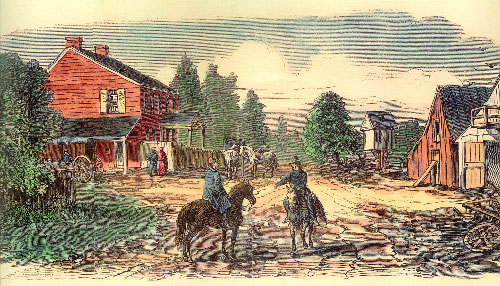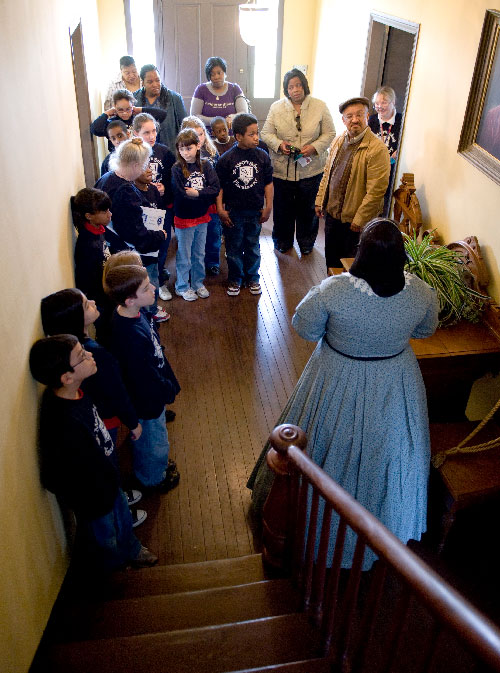WHO WAS MARY SURRATT?
WHO WAS MARY SURRATT?

If it had not been for the major crime of the 19th century, this widow lady from Southern Maryland would never have made the history books. What was that crime? Hint: Think John Wilkes Booth.
On the night of April 14, 1865, this well-known actor entered the presidential box at Ford’s Theatre in Washington, DC and shot President Lincoln as he watched the play, Our American Cousin. Leaping onto the stage, Booth injured his left leg just above the ankle, but managed to exit a rear door, mount his horse, and escape the city via the Navy Yard bridge. Reaching the nearby Maryland countryside, the assassin met up with one of his accomplices and headed for the small village of Surrattsville, just twelve miles from the city limits.
Booth was well-known to the Surratt family, who at that time was running a boardinghouse on H Street in the city. Mary Surratt had befriended the young man after her youngest son (a Confederate courier on the underground line that ran between Richmond and Montreal) had been introduced to Booth by Dr. Samuel A. Mudd. That introduction resulted in John Surratt, Jr. becoming part of Booth’s original plot to kidnap President Lincoln – and, knowingly or unknowingly, Mary Surratt was drawn into the plot also.
Booth visited her H Street boardinghouse frequently, speaking with her when John Surratt, Jr. was not available. As part of the kidnap scheme, rifles and other supplies were hidden at the Surratts’ former home in Surrattsville. When the kidnap scheme changed to assassination, that country home was the first place that Booth and Herold stopped on their flight south. The pair stayed only about five minutes, long enough to retrieve one of the rifles and some swigs of whiskey to ease the pain in Booth’s broken leg, before heading off for Dr. Mudd’s home. The fugitives would later be tracked into the Northern Neck of Virginia, where Herold would be taken prisoner. John Wilkes Booth was shot and died several hours later in the early morning of April 26, 1865.
The tenant at the Surrattsville home would later testify that Mary Surratt had been there on the afternoon of April 14 and had alerted him to have “the shooting irons ready for parties that would call that night.” She had also brought with her Booth’s field glasses to be added to the stash.
John Surratt, Jr. was not in the area at the time, having been sent to upstate New York on Confederate business. As evidence mounted, Mary Surratt became the brunt of the investigation. She was arrested, tried, and convicted of being a conspirator in the plot against Lincoln. On July 7, 1865, she and three of Booth’s men walked to their execution on the gallows at the Washington Arsenal Penitentiary. Within minutes, Mary E. Surratt became the first woman to be executed by the U.S. government. Debates still continue as to her guilt or innocence.
A visit to her restored home in what is now Clinton, Maryland, relives the history of the Civil War era in Southern Maryland (an area with close ties to the Confederacy) and the intrigue surrounding this final desperate act against Lincoln. Guides in period costume relate the social climate of the day and the events leading up to the assassination. A modest admission fee benefits the preservation of this historic site. For further information, go to surrattmuseum.org or call 301-868-1121.


